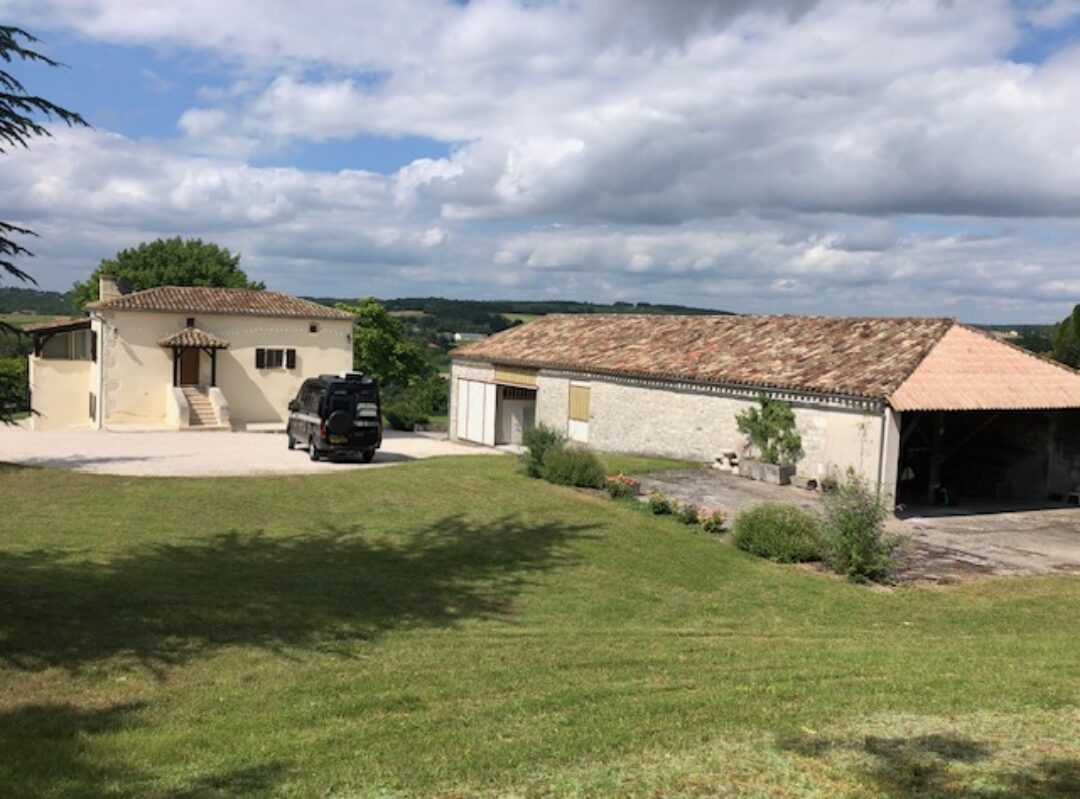Two articles last week in different newspapers featuring the Gers department piqued our interest -it’s a region we don’t know and haven’t visited. As it’s only a little south of Moissac we decided to head out on the motorbike and dip our toes into at least a small part of the area, looking at some of the places mentioned in the articles.
The Gers department, named after the river Gers, is part of the former province of Gascony and is one of the most rural and least densely departments of France, famous for its numerous culinary specialities including armagnac, wine and duck. As we headed south of Moissac we soon found ourselves in the typical Gersois countryside. This is a gently rolling golden and green landscape with fields of sunflowers, wheat, maize and sorghum as far as the eye can see and with very few houses or villages. Until this year the Gers was the largest national producer of sunflowers but that has apparently just been overtaken by the Haute-Vienne department.
Our first stop was the town of Lectoure, the Gascon capital of the melon and also famous for white garlic. Its huge cathedral tower dominates one end of the main street that leads down to the town’s original hospital and spa at the other end. Lectoure was originally the capital of the historic Lomagne region, that was once the base of the counts of Armagnac. Although the capital is now the town of Auch, Lectoure remains a lively town with a good selection of shops.

Back on the road we headed next to the town of Condom, the capital of Armagnac. It’s wealth in recent centuries was based around the production and export of armagnac from its port. The town has a number of elegant buildings and an impressive cathedral in the centre. In the square outside the cathedral stands a sculpture, in fact 4 statues, of the famous Gersois, d’Artagnan, created by Alexander Dumas, with his Three Musketeer comrades-in-arms.


Our final stop of the day was the village of Le Romieu. Like Lectoure and Condom, this village was a stopping point on the Chemin de Compostelle pilgrimage route and its name means ‘Pilgrim of Rome’. Today it is known for its 14th century collegiate church with tower and a small cloister.
There is also a legend linked to the village which has resulted in some sculptural additions. Angeline, a young orphaned girl, grew up in the village and had an affinity for cats. In 1342 a very wet winter meant that crops could not be sown, resulting in a famine. The starving villagers became so desperate that they had to resort to eating animals, including cats. Angeline’s adoptive parents allowed her to keep a male and female cat, hidden away from the eyes of other villagers. Inevitably better times and harvests returned, but the villagers then found their grain stores overrun with rats due to there being no cats. Angeline revealed the hidden cats ( and their offspring) and gave them to the villagers, thereby saving them from another disaster. Maurice Serreau, a sculptor who had settled in the village, heard the legend being recounted in the early 1900s and was inspired to add a sculpture of a cat outside his house. Other residents were keen to have their own cats and a number of houses are now adorned with them.

We certainly enjoyed our short foray into the Gers departmentand would be happy to explore further when we’re next in the area – next time on foot so we can enjoy the Armagnac!








